The Da Vinci Code Read online
Page 9
«PHI’s ubiquity in nature,» Langdon said, killing the lights,» clearly exceeds coincidence, and so the ancients assumed the number PHI must have been preordained by the Creator of the universe. Early scientists heralded one-point-six-one-eight as the Divine Proportion.»
«Hold on,» said a young woman in the front row. «I’m a bio major and I’ve never seen this Divine Proportion in nature.»
«No?» Langdon grinned. «Ever study the relationship between females and males in a honeybee community?»
«Sure. The female bees always outnumber the male bees.»
«Correct. And did you know that if you divide the number of female bees by the number of male bees in any beehive in the world, you always get the same number?»
«You do?» «Yup. PHI.» The girl gaped. «NO WAY!»
«Way!» Langdon fired back, smiling as he projected a slide of a spiral seashell. «Recognize this?»
«It’s a nautilus,» the bio major said. «A cephalopod mollusk that pumps gas into its chambered shell to adjust its buoyancy.»
«Correct. And can you guess what the ratio is of each spiral’s diameter to the next?» The girl looked uncertain as she eyed the concentric arcs of the nautilus spiral. Langdon nodded. «PHI. The Divine Proportion. One-point-six-one-eight to one.» The girl looked amazed.
Langdon advanced to the next slide – a close-up of a sunflower’s seed head. «Sunflower seeds grow in opposing spirals. Can you guess the ratio of each rotation’s diameter to the next?» «PHI?» everyone said.» Bingo.» Langdon began racing through slides now – spiraled pinecone petals, leaf arrangement on plant stalks, insect segmentation – all displaying astonishing obedience to the Divine Proportion.
«This is amazing!» someone cried out.
«Yeah,» someone else said,» but what does it have to do with art?»
«Aha!» Langdon said. «Glad you asked.» He pulled up another slide – a pale yellow parchment displaying Leonardo Da Vinci’s famous male nude – The Vitruvian Man – named for Marcus Vitruvius, the brilliant Roman architect who praised the Divine Proportion in his text De Architectura.
«Nobody understood better than Da Vinci the divine structure of the human body. Da Vinci actually exhumed corpses to measure the exact proportions of human bone structure. He was the first to show that the human body is literally made of building blocks whose proportional ratios always equal PHI.»
Everyone in class gave him a dubious look.
«Don’t believe me?» Langdon challenged. «Next time you’re in the shower, take a tape measure.»
A couple of football players snickered.
«Not just you insecure jocks,» Langdon prompted. «All of you. Guys and girls. Try it. Measure the distance from the tip of your head to the floor. Then divide that by the distance from your bellybutton to the floor. Guess what number you get.»
«Not PHI!» one of the jocks blurted out in disbelief.
«Yes, PHI,» Langdon replied. «One-point-six-one-eight. Want another example? Measure the distance from your shoulder to your fingertips, and then divide it by the distance from your elbow to your fingertips. PHI again. Another? Hip to floor divided by knee to floor. PHI again. Finger joints. Toes. Spinal divisions. PHI. PHI. PHI. My friends, each of you is a walking tribute to the Divine Proportion.»
Even in the darkness, Langdon could see they were all astounded. He felt a familiar warmth inside. This is why he taught. «My friends, as you can see, the chaos of the world has an underlying order. When the ancients discovered PHI, they were certain they had stumbled across God’s building block for the world, and they worshipped Nature because of that. And one can understand why. God’s hand is evident in Nature, and even to this day there exist pagan, Mother Earth-revering religions. Many of us celebrate nature the way the pagans did, and don’t even know it. May Day is a perfect example, the celebration of spring… the earth coming back to life to produce her bounty. The mysterious magic inherent in the Divine Proportion was written at the beginning of time. Man is simply playing by Nature’s rules, and because art is man’s attempt to imitate the beauty of the Creator’s hand, you can imagine we might be seeing a lot of instances of the Divine Proportion in art this semester.»
Over the next half hour, Langdon showed them slides of artwork by Michelangelo, Albrecht Dürer, Da Vinci, and many others, demonstrating each artist’s intentional and rigorous adherence to the Divine Proportion in the layout of his compositions. Langdon unveiled PHI in the architectural dimensions of the Greek Parthenon, the pyramids of Egypt, and even the United Nations Building in New York. PHI appeared in the organizational structures of Mozart’s sonatas, Beethoven’s Fifth Symphony, as well as the works of Bartók, Debussy, and Schubert. The number PHI, Langdon told them, was even used by Stradivarius to calculate the exact placement of the f-holes in the construction of his famous violins.
«In closing,» Langdon said, walking to the chalkboard,» we return to symbols» He drew five intersecting lines that formed a five-pointed star. «This symbol is one of the most powerful images you will see this term. Formally known as a pentagram – or pentacle, as the ancients called it – this symbol is considered both divine and magical by many cultures. Can anyone tell me why that might be?»
Stettner, the math major, raised his hand. «Because if you draw a pentagram, the lines automatically divide themselves into segments according to the Divine Proportion.»
Langdon gave the kid a proud nod. «Nice job. Yes, the ratios of line segments in a pentacle allequal PHI, making this symbol the ultimate expression of the Divine Proportion. For this reason, the five-pointed star has always been the symbol for beauty and perfection associated with the goddess and the sacred feminine.»
The girls in class beamed.
«One note, folks. We’ve only touched on Da Vinci today, but we’ll be seeing a lot more of him this semester. Leonardo was a well-documented devotee of the ancient ways of the goddess. Tomorrow, I’ll show you his fresco The Last Supper, which is one of the most astonishing tributes to the sacred feminine you will ever see.»
«You’re kidding, right?» somebody said. «I thought The Last Supper was about Jesus!» Langdon winked. «There are symbols hidden in places you would never imagine.»
«Come on,» Sophie whispered. «What’s wrong? We’re almost there. Hurry!»
Langdon glanced up, feeling himself return from faraway thoughts. He realized he was standing at a dead stop on the stairs, paralyzed by sudden revelation.
O, Draconian devil! Oh, lame saint!
Sophie was looking back at him.
It can ’ t be that simple , Langdon thought. But he knew of course that it was. There in the bowels of the Louvre… with images of PHI and Da Vinci swirling through his mind, Robert Langdon suddenly and unexpectedly deciphered Saunière’s code.
«O, Draconian devil!» he said. «Oh, lame saint! It’s the simplest kind of code!»
Sophie was stopped on the stairs below him, staring up in confusion. A code? She had been pondering the words all night and had not seen a code. Especially a simple one.
«You said it yourself.» Langdon’s voice reverberated with excitement. «Fibonacci numbers only have meaning in their proper order. Otherwise they’re mathematical gibberish.»
Sophie had no idea what he was talking about. The Fibonacci numbers? She was certain they had been intended as nothing more than a means to get the Cryptography Department involved tonight. They have another purpose? She plunged her hand into her pocket and pulled out the printout, studying her grandfather’s message again.
13-3-2-21-1-1-8-5
O, Draconian devil!
Oh, lame saint!
What about the numbers?
«The scrambled Fibonacci sequence is a clue,» Langdon said, taking the printout. «The numbers area hint as to how to decipher the rest of the message. He wrote the sequence out of order to tell us to apply the same concept to the text. O, Draconian devil? Oh, lame saint? Those lines mean nothing.
They are simpl
y letters written out of order.»
Sophie needed only an instant to process Langdon’s implication, and it seemed laughably simple. «You think this message is… une anagramme?» She stared at him. «Like a word jumble from a newspaper?»
Langdon could see the skepticism on Sophie’s face and certainly understood. Few people realized that anagrams, despite being a trite modern amusement, had a rich history of sacred symbolism.
The mystical teachings of the Kabbala drew heavily on anagrams – rearranging the letters of Hebrew words to derive new meanings. French kings throughout the Renaissance were so convinced that anagrams held magic power that they appointed royal anagrammatists to help them make better decisions by analyzing words in important documents. The Romans actually referred to the study of anagrams as ars magna – «the great art.»
Langdon looked up at Sophie, locking eyes with her now. «Your grandfather’s meaning was right in front of us all along, and he left us more than enough clues to see it.»
Without another word, Langdon pulled a pen from his jacket pocket and rearranged the letters in each line.
O, Draconian devil! Oh, lame saint! was a perfect anagram of… Leonardo Da Vinci! The Mona Lisa!
CHAPTER 21
The Mona Lisa.
For an instant, standing in the exit stairwell, Sophie forgot all about trying to leave the Louvre.
Her shock over the anagram was matched only by her embarrassment at not having deciphered the message herself. Sophie’s expertise in complex cryptanalysis had caused her to overlook simplistic word games, and yet she knew she should have seen it. After all, she was no stranger to anagrams – especially in English.
When she was young, often her grandfather would use anagram games to hone her English spelling. Once he had written the English word» planets» and told Sophie that an astonishing sixty-two other English words of varying lengths could be formed using those same letters. Sophie had spent three days with an English dictionary until she found them all.
«I can’t imagine,» Langdon said, staring at the printout,» how your grandfather created such an intricate anagram in the minutes before he died.»
Sophie knew the explanation, and the realization made her feel even worse. I should have seen this!She now recalled that her grandfather – a wordplay aficionado and art lover – had entertained himself as a young man by creating anagrams of famous works of art. In fact, one of his anagrams had gotten him in trouble once when Sophie was a little girl. While being interviewed by an American art magazine, Saunière had expressed his distaste for the modernist Cubist movement by noting that Picasso’s masterpiece Les Demoiselles d’Avignon was a perfect anagram of vile meaningless doodles.Picasso fans were not amused.
«My grandfather probably created this Mona Lisa anagram long ago,» Sophie said, glancing up at Langdon. And tonight he was forced to use it as a makeshift code.Her grandfather’s voice had called out from beyond with chilling precision.
Leonardo Da Vinci ! The Mona Lisa!Why his final words to her referenced the famous painting, Sophie had no idea, but she could think of only one possibility. A disturbing one.
Those were not his final words… .
Was she supposed to visit the Mona Lisa? Had her grandfather left her a message there? The idea seemed perfectly plausible. After all, the famous painting hung in the Salle des Etats – a private viewing chamber accessible only from the Grand Gallery. In fact, Sophie now realized, the doors that opened into the chamber were situated only twenty meters from where her grandfather had been found dead.
He easily could have visited the Mona Lisa before he died.
Sophie gazed back up the emergency stairwell and felt torn. She knew she should usher Langdon from the museum immediately, and yet instinct urged her to the contrary. As Sophie recalled her first childhood visit to the Denon Wing, she realized that if her grandfather had a secret to tell her, few places on earth made a more apt rendezvous than Da Vinci’s Mona Lisa.
«She’s just a little bit farther,» her grandfather had whispered, clutching Sophie’s tiny hand as he led her through the deserted museum after hours.
Sophie was six years old. She felt small and insignificant as she gazed up at the enormous ceilings and down at the dizzying floor. The empty museum frightened her, although she was not about to let her grandfather know that. She set her jaw firmly and let go of his hand.
«Up ahead is the Salle des Etats,» her grandfather said as they approached the Louvre’s most famous room. Despite her grandfather’s obvious excitement, Sophie wanted to go home. She had seen pictures of the Mona Lisa in books and didn’t like it at all. She couldn’t understand why everyone made such a fuss.
«C’est ennuyeux,» Sophie grumbled.
«Boring,» he corrected. «French at school. English at home.»
«Le Louvre, c’est pas chez moi!» she challenged.
He gave her a tired laugh. «Right you are. Then let’s speak English just for fun.»
Sophie pouted and kept walking. As they entered the Salle des Etats, her eyes scanned the narrow room and settled on the obvious spot of honor – the center of the right-hand wall, where a lone portrait hung behind a protective Plexiglas wall. Her grandfather paused in the doorway and motioned toward the painting.
«Go ahead, Sophie. Not many people get a chance to visit her alone.»
Swallowing her apprehension, Sophie moved slowly across the room. After everything she’d heard about the Mona Lisa, she felt as if she were approaching royalty. Arriving in front of the protective Plexiglas, Sophie held her breath and looked up, taking it in all at once.
Sophie was not sure what she had expected to feel, but it most certainly was not this. No jolt of amazement. No instant of wonder. The famous face looked as it did in books. She stood in silence for what felt like forever, waiting for something to happen.
«So what do you think?» her grandfather whispered, arriving behind her. «Beautiful, yes?» «She’s too little.» Saunière smiled. «You’re little and you’re beautiful.»
I am not beautiful , she thought. Sophie hated her red hair and freckles, and she was bigger than all the boys in her class. She looked back at the Mona Lisa and shook her head. «She’s even worse than in the books. Her face is… brumeux.»
«Foggy,» her grandfather tutored.
«Foggy,» Sophie repeated, knowing the conversation would not continue until she repeated her new vocabulary word.
«That’s called the sfumato style of painting,» he told her,» and it’s very hard to do. Leonardo Da Vinci was better at it than anyone.»
Sophie still didn’t like the painting. «She looks like she knows something… like when kids at school have a secret.»
Her grandfather laughed. «That’s part of why she is so famous. People like to guess why she is smiling.»
«Do you know why she’s smiling?»
«Maybe.» Her grandfather winked. «Someday I’ll tell you all about it.» Sophie stamped her foot. «I told you I don’t like secrets!» «Princess,» he smiled. «Life is filled with secrets. You can’t learn them all at once.»
«I’m going back up,» Sophie declared, her voice hollow in the stairwell. «To the Mona Lisa?» Langdon recoiled. «Now?» Sophie considered the risk. «I’m not a murder suspect. I’ll take my chances. I need to understand what my grandfather was trying to tell me.»
«What about the embassy?»
Sophie felt guilty turning Langdon into a fugitive only to abandon him, but she saw no other option. She pointed down the stairs to a metal door. «Go through that door, and follow the illuminated exit signs. My grandfather used to bring me down here. The signs will lead you to a security turnstile. It’s monodirectional and opens out.» She handed Langdon her car keys. «Mine is the red SmartCar in the employee lot. Directly outside this bulkhead. Do you know how to get to the embassy?»
Langdon nodded, eyeing the keys in his hand.
«Listen,» Sophie said, her voice softening. «I think my grandfather may have left me
a message at the Mona Lisa – some kind of clue as to who killed him. Or why I’m in danger.» Or what happenedto my family. «I have to go see.»
«But if he wanted to tell you why you were in danger, why wouldn’t he simply write it on the floor where he died? Why this complicated word game?»
«Whatever my grandfather was trying to tell me, I don’t think he wanted anyone else to hear it. Not even the police.» Clearly, her grandfather had done everything in his power to send a confidential transmission directly to her.He had written it in code, included her secret initials, and told her to find Robert Langdon – a wise command, considering the American symbologist had deciphered his code. «As strange as it may sound,» Sophie said,» I think he wants me to get to the Mona Lisabefore anyone else does.» «I’ll come.» «No! We don’t know how long the Grand Gallery will stay empty. You have to go.»
Langdon seemed hesitant, as if his own academic curiosity were threatening to override sound judgment and drag him back into Fache’s hands.
«Go. Now.» Sophie gave him a grateful smile. «I’ll see you at the embassy, Mr. Langdon.» Langdon looked displeased. «I’ll meet you there on one condition,» he replied, his voice stern. She paused, startled. «What’s that?»
«That you stop calling me Mr.Langdon.»
Sophie detected the faint hint of a lopsided grin growing across Langdon’s face, and she felt herself smile back. «Good luck, Robert.»
When Langdon reached the landing at the bottom of the stairs, the unmistakable smell of linseed oil and plaster dust assaulted his nostrils. Ahead, an illuminated SORTIE/EXIT displayed an arrow pointing down a long corridor.
Langdon stepped into the hallway.
To the right gaped a murky restoration studio out of which peered an army of statues in various states of repair. To the left, Langdon saw a suite of studios that resembled Harvard art classrooms – rows of easels, paintings, palettes, framing tools – an art assembly line.
As he moved down the hallway, Langdon wondered if at any moment he might awake with a start in his bed in Cambridge. The entire evening had felt like a bizarre dream. I’m about to dash out of the Louvre…a fugitive.
Saunière’s clever anagrammatic message was still on his mind, and Langdon wondered what Sophie would find at the Mona Lisa…if anything. She had seemed certain her grandfather meant for her to visit the famous painting one more time. As plausible an interpretation as this seemed, Langdon felt haunted now by a troubling paradox.
P. S. Find Robert Langdon.
Saunière had written Langdon’s name on the floor, commanding Sophie to find him. But why? Merely so Langdon could help her break an anagram?
It seemed quite unlikely.
After all, Saunière had no reason to think Langdon was especially skilled at anagrams. We’ve never even met.More important, Sophie had stated flat out that she should have broken the anagram on her own. It had been Sophie who spotted the Fibonacci sequence, and, no doubt, Sophie who, if given a little more time, would have deciphered the message with no help from Langdon.
Sophie was supposed to break that anagram on her own.Langdon was suddenly feeling more certain about this, and yet the conclusion left an obvious gaping lapse in the logic of Saunière’s actions.
Why me? Langdon wondered, heading down the hall. Why was Saunière’s dying wish that his estranged granddaughter find me? What is it that Saunière thinks I know?
With an unexpected jolt, Langdon stopped short. Eyes wide, he dug in his pocket and yanked out the computer printout. He stared at the last line of Saunière’s message. P. S. Find Robert Langdon. He fixated on two letters. P. S. In that instant, Langdon felt Saunière’s puzzling mix of symbolism fall into stark focus. Like a peal of thunder, a career’s worth of symbology and history came crashing down around him. Everything Jacques Saunière had done tonight suddenly made perfect sense.
Langdon’s thoughts raced as he tried to assemble the implications of what this all meant. Wheeling, he stared back in the direction from which he had come.
Is there time?
He knew it didn’t matter.
Without hesitation, Langdon broke into a sprint back toward the stairs.
CHAPTER 22
Kneeling in the first pew, Silas pretended to pray as he scanned the layout of the sanctuary. Saint- Sulpice, like most churches, had been built in the shape of a giant Roman cross. Its long central section – the nave – led directly to the main altar, where it was transversely intersected by a shorter section, known as the transept. The intersection of nave and transept occurred directly beneath the main cupola and was considered the heart of the church… her most sacred and mystical point.
Not tonight, Silas thought. Saint-Sulpice hides her secrets elsewhere.
Turning his head to the right, he gazed into the south transept, toward the open area of floor beyond the end of the pews, to the object his victims had

 Angels & Demons
Angels & Demons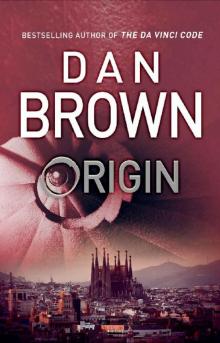 Origin
Origin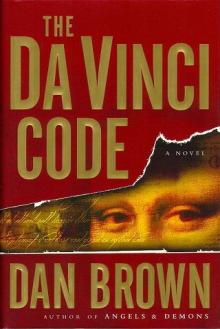 The Da Vinci Code
The Da Vinci Code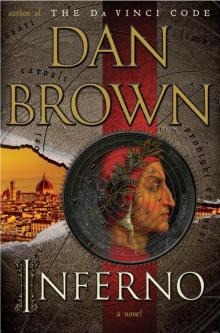 Inferno
Inferno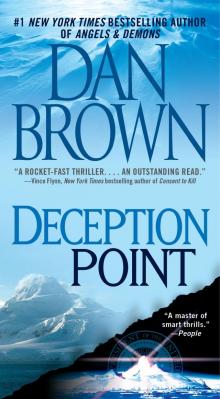 Deception Point
Deception Point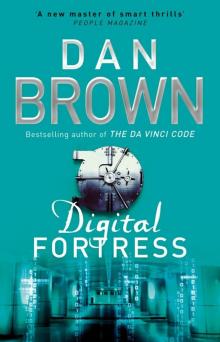 Digital Fortress
Digital Fortress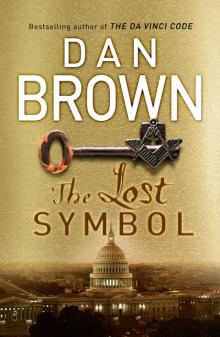 The Lost Symbol
The Lost Symbol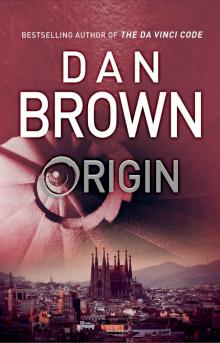 Origin: (Robert Langdon Book 5)
Origin: (Robert Langdon Book 5)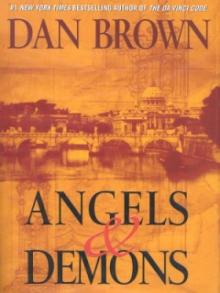 Angles & Demons
Angles & Demons Inferno: A Novel
Inferno: A Novel Angels & Demons rl-1
Angels & Demons rl-1 The Great Expectations School
The Great Expectations School The Lost Symbol rl-3
The Lost Symbol rl-3 Angels and Demons
Angels and Demons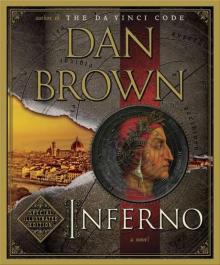 Inferno: Special Illustrated Edition: Featuring Robert Langdon
Inferno: Special Illustrated Edition: Featuring Robert Langdon